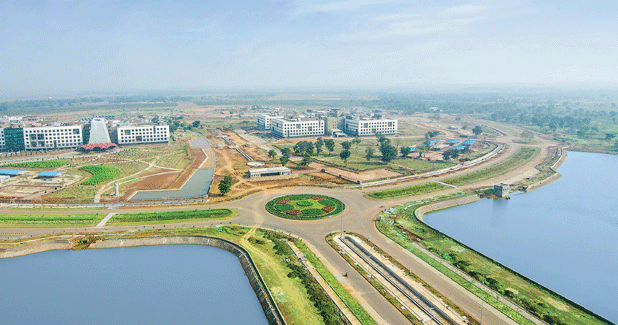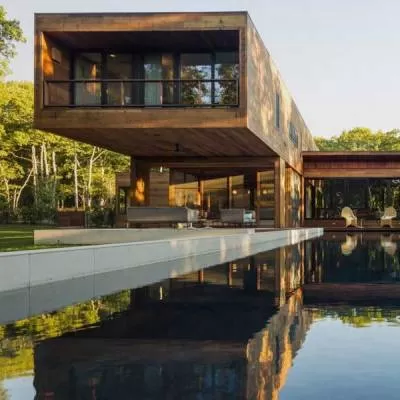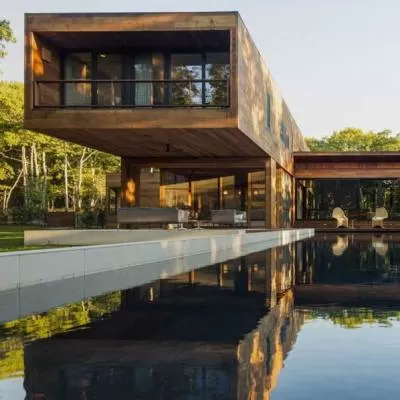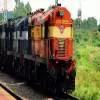- Home
- Real Estate
- The Greenfield Guy

The Greenfield Guy
An engineer is a person who uses the knowledge of pure or applied science for the good of humanity,¨ avers 51-year-old Salil Rai Shrivastava. Hailing from a family of doctors, he says, ¨I chose a field regarding which I had no knowledge.¨ But he believes every person he has worked with, from seniors to subordinates, has been a mentor. ¨I have learnt something from each of them,¨ he says. His study tours to places like Columbia, Mexico, Finland, Sweden, Dubai and China and participation in national and international workshops and seminars have only added to his knowledge capital. After joining P&T Building Works services through the UPSC, Engineering Service Exam (1987 batch), he has worked in Mumbai (twice), Bhopal, Indore, Aurangabad, Pune and Ahmedabad in various capacities during over 25 years of service. Since 2009, his current assignment as Chief Engineer of Naya Raipur Development Authority (NRDA) has given him a rare opportunity to develop the first Greenfield city in this century, spread across 8,000 hectare. Indeed, Naya Raipur will be the first integrated smart city in India.
He has proved equal to the task, planning, designing and constructing buildings, towers, underground structures, water supply scheme, sewerage treatment plant, roads, optical fibre and cable ducts. He has steered the execution of various buildings such as New Mantralaya in Naya Raipur as well as the interior design of offices, conference hall and customer service centres. In addition to other infrastructure for the city, Shrivastava is in charge of the planning, design and execution of the World Bank-assisted Bus Rapid Transit System (BRTS) and Non-Motorised Transport (NMT).
He shares more about his career, the profession of engineering and the building of Naya Raipur with CW:
Challenges faced In my initial years, I joined the design team with zero knowledge of computers. Back then, computer-aided design was not well-known. From manually designing structures, we graduated to 2D analysing and then 3D, and several programmes were developed. When I was in Bhopal, I prepared designs for the entire state of Madhya Pradesh. Thereafter, a lot of new materials came in new structures. I belonged to the Department of Telecom, which has a lot of public interface, and you need to engage in marketing and business development. So I developed my own methodology for customer service.
Changes observed
Over the years, because of IT and new advancements, there has been a change in the mindset of government officials. There is a vast difference in the materials being used with new specifications. Workmanship has improved not only on the government side but also on the part of the agency and contractor and in terms of project management.
India is still in a transitional phase with excessive reliance on manual labour. We are yet to graduate to mechanised working like precast. European countries and even Asian countries like Malaysia and China are extensively mechanised, improving quality. There has been a slight change in some Indian metros and major cities but we are yet to achieve this. In Naya Raipur, we are adopting precast technology. However, when we talk of roads, India is on a par with any international country.
Naya Raipur
We are a small bunch of officers and are passionate about our work because cities or townships on this scale are a once-in-a-lifetime opportunity for an engineer. This will be one of the major new upcoming cities in the world. Internationally, we are interacting with various new upcoming towns. The nature of my job involves planning and execution of almost all the infrastructure, including roads; we have already executed 75 km of four-lane and six-lane roads. We are doing an additional 60 km of roads at present.
In addition, we are doing a lot of work to make the city pedestrian and cyclist-friendly. Also, we have the sewerage network coming up, wherein water is being brought from 23 km from the Mahanadi River. We have installed a fresh water treatment plant, which is already functional and opted for a solar plant. The electrical network is all underground. Further, we have completed the Mantralaya building, which is functional; it was inaugurated by the president in 2012. All other government buildings like police, forest and health headquarters are also coming up. To make Naya Raipur sustainable, we have banned bore wells and made rainwater harvesting mandatory. At the same time, a sewerage treatment plant has been installed. All this leads to zero-discharged water. We are also rejuvenating our existing water bodies. In terms of being ´smart´, our consultant was on board even before the Prime Minister talked about 100 smart cities. So we are already ahead. About Rs 30,000 crore is being invested in the development of this city with the estimated completion year being 2030.
Land acquisition
The biggest challenge in greenfield projects is procurement of land. And now, with the new Land Acquisition Act being introduced, it will not be possible to develop a city of this stature. According to the Bill, if you want to acquire land, there are limited reasons under which this can be done. If the acquisition is for some other purpose, one needs to have at least 70-80 per cent of the local people agreeing to it. The expenditure for this is more compared to what was given earlier. Also, beyond that, you have to take care of the local people for the next 20 years as partners. For Naya Raipur, we had the cooperation of the people.
Being smart
A smart city should be environment-friendly and enable citizen interface with the corporation. It involves good quality roads, water supply system, sewerage, solid waste management, electrical network and mass transit. Almost everything should be accessible online. We also have a legacy of existing cities where the infrastructure is insufficient to handle urbanisation. Hence, if we talk of smart cities, it should be for both greenfield and retrofitting existing cities. As for Naya Raipur, it is the first smart city of the country. Considering the way we are taking it up, it will be the first smart city in the world as the planned services are unique to this city. Achieving this will be a dream come true.
Lessons learnt
Knowledge and design-wise, India is on a par but not in terms of execution. We are unable to execute the way we plan and the quality differs. The main problem is labour and quality of workmanship and lack of mechanisation. Hence, the way technology is being used elsewhere has not migrated to India equally.
The biggest problem is lack of proper education for the skilled technician. We have lakhs of engineers coming up but we do not have good masons, plumbers and carpenters. There is no school; they start as helpers and graduate over the years to become masons, carpenters, plumbers and electricians. There are few Indian colleges and we need at least four times what we have for skilled development. That is the need of the hour. These days, law schools send their students for internship. Unfortunately, in engineering, there is only training of one or two months. I believe engineering schools should connect with the industry and internship should be made compulsory. Today, an engineer who comes out of school is almost a theoretical engineer with no practical experience.
Challenge zone
Project 1
Project: Construction of State Secretariat Building in Naya Raipur
Period: 2009-2012
Features: This 6.5-lakh-sq-ft building complex comprises five blocks, connected with lobbies and corridor. Fully air-conditioned with air ozone system and thermal storage tanks, it has a BMS system and a 24 + 7, hydro-pneumatic pumping and MBR technology is planned. One entry is designed for an unsupported 32-m RCC pyramid with three walls slanting.
Background: After Chhattisgarh became a state in 2000, a new capital was proposed at Naya Raipur, 20 km from Raipur. This building is the seat of power - Mantralaya named Mahanadi Bhawan.
Challenges: Coordination between vendors. The interior design work on the chief minister´s floor was redesigned and completed in 40 days by taking decisions locally.
Solution: Coordination meetings were held twice every day with all the vendors. This was achieved by working almost 18 hours a day. Several online decisions were taken to achieve targets. The outcome has been appreciated extensively.
PROJECT 2
Project: Construction of a 75-km road in Naya Raipur
Period: 2007-2011
Cost: Rs 354 crore
Client: Naya Raipur Development Authority
Features: Included 75.15 km of four-lane and six-lane roads with cross drainage works, interchange over NH-6, street lights and other street furniture.
Background: The city is a Greenfield one spread over 8,000 hectare in Phase-I. About 75.15 km, four-lane or six-lane city level roads have been executed with best standards. They have withstood three monsoons without any maintenance. Not a single instance of any failure has been reported during the period.
Challenges: The major challenge was construction of roads with parts of land acquired in phases. Some area was under litigation and took almost three years to get through. Construction of the interchange on the running NH-6 (Howrah-Mumbai) was the main challenge.
Solution: The construction of the roads was done with excellent specs and quality. This was achieved with the cooperation of the farmers and local people. The interchange was constructed with complete safety and on the busiest national highway.
Salil Rai Shrivastava, Chief Engineer, Naya Raipur Development Authority (NRDA), shares his experience in developing Naya Raipur and his views on the civil engineering fraternity. An engineer is a person who uses the knowledge of pure or applied science for the good of humanity,¨ avers 51-year-old Salil Rai Shrivastava. Hailing from a family of doctors, he says, ¨I chose a field regarding which I had no knowledge.¨ But he believes every person he has worked with, from seniors to subordinates, has been a mentor. ¨I have learnt something from each of them,¨ he says. His study tours to places like Columbia, Mexico, Finland, Sweden, Dubai and China and participation in national and international workshops and seminars have only added to his knowledge capital. After joining P&T Building Works services through the UPSC, Engineering Service Exam (1987 batch), he has worked in Mumbai (twice), Bhopal, Indore, Aurangabad, Pune and Ahmedabad in various capacities during over 25 years of service. Since 2009, his current assignment as Chief Engineer of Naya Raipur Development Authority (NRDA) has given him a rare opportunity to develop the first Greenfield city in this century, spread across 8,000 hectare. Indeed, Naya Raipur will be the first integrated smart city in India. He has proved equal to the task, planning, designing and constructing buildings, towers, underground structures, water supply scheme, sewerage treatment plant, roads, optical fibre and cable ducts. He has steered the execution of various buildings such as New Mantralaya in Naya Raipur as well as the interior design of offices, conference hall and customer service centres. In addition to other infrastructure for the city, Shrivastava is in charge of the planning, design and execution of the World Bank-assisted Bus Rapid Transit System (BRTS) and Non-Motorised Transport (NMT). He shares more about his career, the profession of engineering and the building of Naya Raipur with CW: Challenges faced In my initial years, I joined the design team with zero knowledge of computers. Back then, computer-aided design was not well-known. From manually designing structures, we graduated to 2D analysing and then 3D, and several programmes were developed. When I was in Bhopal, I prepared designs for the entire state of Madhya Pradesh. Thereafter, a lot of new materials came in new structures. I belonged to the Department of Telecom, which has a lot of public interface, and you need to engage in marketing and business development. So I developed my own methodology for customer service. Changes observed Over the years, because of IT and new advancements, there has been a change in the mindset of government officials. There is a vast difference in the materials being used with new specifications. Workmanship has improved not only on the government side but also on the part of the agency and contractor and in terms of project management. India is still in a transitional phase with excessive reliance on manual labour. We are yet to graduate to mechanised working like precast. European countries and even Asian countries like Malaysia and China are extensively mechanised, improving quality. There has been a slight change in some Indian metros and major cities but we are yet to achieve this. In Naya Raipur, we are adopting precast technology. However, when we talk of roads, India is on a par with any international country. Naya Raipur We are a small bunch of officers and are passionate about our work because cities or townships on this scale are a once-in-a-lifetime opportunity for an engineer. This will be one of the major new upcoming cities in the world. Internationally, we are interacting with various new upcoming towns. The nature of my job involves planning and execution of almost all the infrastructure, including roads; we have already executed 75 km of four-lane and six-lane roads. We are doing an additional 60 km of roads at present. In addition, we are doing a lot of work to make the city pedestrian and cyclist-friendly. Also, we have the sewerage network coming up, wherein water is being brought from 23 km from the Mahanadi River. We have installed a fresh water treatment plant, which is already functional and opted for a solar plant. The electrical network is all underground. Further, we have completed the Mantralaya building, which is functional; it was inaugurated by the president in 2012. All other government buildings like police, forest and health headquarters are also coming up. To make Naya Raipur sustainable, we have banned bore wells and made rainwater harvesting mandatory. At the same time, a sewerage treatment plant has been installed. All this leads to zero-discharged water. We are also rejuvenating our existing water bodies. In terms of being ´smart´, our consultant was on board even before the Prime Minister talked about 100 smart cities. So we are already ahead. About Rs 30,000 crore is being invested in the development of this city with the estimated completion year being 2030. Land acquisition The biggest challenge in greenfield projects is procurement of land. And now, with the new Land Acquisition Act being introduced, it will not be possible to develop a city of this stature. According to the Bill, if you want to acquire land, there are limited reasons under which this can be done. If the acquisition is for some other purpose, one needs to have at least 70-80 per cent of the local people agreeing to it. The expenditure for this is more compared to what was given earlier. Also, beyond that, you have to take care of the local people for the next 20 years as partners. For Naya Raipur, we had the cooperation of the people. Being smart A smart city should be environment-friendly and enable citizen interface with the corporation. It involves good quality roads, water supply system, sewerage, solid waste management, electrical network and mass transit. Almost everything should be accessible online. We also have a legacy of existing cities where the infrastructure is insufficient to handle urbanisation. Hence, if we talk of smart cities, it should be for both greenfield and retrofitting existing cities. As for Naya Raipur, it is the first smart city of the country. Considering the way we are taking it up, it will be the first smart city in the world as the planned services are unique to this city. Achieving this will be a dream come true. Lessons learnt Knowledge and design-wise, India is on a par but not in terms of execution. We are unable to execute the way we plan and the quality differs. The main problem is labour and quality of workmanship and lack of mechanisation. Hence, the way technology is being used elsewhere has not migrated to India equally. The biggest problem is lack of proper education for the skilled technician. We have lakhs of engineers coming up but we do not have good masons, plumbers and carpenters. There is no school; they start as helpers and graduate over the years to become masons, carpenters, plumbers and electricians. There are few Indian colleges and we need at least four times what we have for skilled development. That is the need of the hour. These days, law schools send their students for internship. Unfortunately, in engineering, there is only training of one or two months. I believe engineering schools should connect with the industry and internship should be made compulsory. Today, an engineer who comes out of school is almost a theoretical engineer with no practical experience. Challenge zone Project 1 Project: Construction of State Secretariat Building in Naya Raipur Period: 2009-2012 Features: This 6.5-lakh-sq-ft building complex comprises five blocks, connected with lobbies and corridor. Fully air-conditioned with air ozone system and thermal storage tanks, it has a BMS system and a 24 + 7, hydro-pneumatic pumping and MBR technology is planned. One entry is designed for an unsupported 32-m RCC pyramid with three walls slanting. Background: After Chhattisgarh became a state in 2000, a new capital was proposed at Naya Raipur, 20 km from Raipur. This building is the seat of power - Mantralaya named Mahanadi Bhawan. Challenges: Coordination between vendors. The interior design work on the chief minister´s floor was redesigned and completed in 40 days by taking decisions locally. Solution: Coordination meetings were held twice every day with all the vendors. This was achieved by working almost 18 hours a day. Several online decisions were taken to achieve targets. The outcome has been appreciated extensively. PROJECT 2 Project: Construction of a 75-km road in Naya Raipur Period: 2007-2011 Cost: Rs 354 crore Client: Naya Raipur Development Authority Features: Included 75.15 km of four-lane and six-lane roads with cross drainage works, interchange over NH-6, street lights and other street furniture. Background: The city is a Greenfield one spread over 8,000 hectare in Phase-I. About 75.15 km, four-lane or six-lane city level roads have been executed with best standards. They have withstood three monsoons without any maintenance. Not a single instance of any failure has been reported during the period. Challenges: The major challenge was construction of roads with parts of land acquired in phases. Some area was under litigation and took almost three years to get through. Construction of the interchange on the running NH-6 (Howrah-Mumbai) was the main challenge. Solution: The construction of the roads was done with excellent specs and quality. This was achieved with the cooperation of the farmers and local people. The interchange was constructed with complete safety and on the busiest national highway.



















